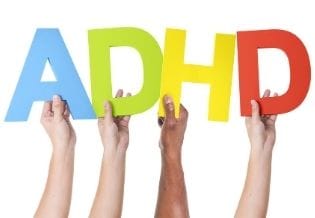Effectiveness of Mindful Routine in Attention Deficit Hyperactive Disorder (ADHD) Children
Abstract
Attention deficit hyperactive disorder is characterised by set of neurological based symptoms in children which falls into broadly two categories; inattention and hyperactive impulsive behaviour. It adversely affect child in various areas like social skill, communication, routine of daily life, academic performance and many.It not only affects the child but also other family members. ADHD often creates unproductive pattern, spouse conflict and poor quality of life. Because of executive function issue, ADHD child face difficulty in establishing and maintaining routines from morning to night which increase demands on parents. As a result parents becomes more exhausted ,emotionally triggered and breakdown.This study shows establishing consistent mindfulness routine make daily life simpler and easier for both the parent and children with ADHD.
Author Contributions
Academic Editor: Sefa Bulut, Department of Educational Sciences Head of Counseling Psychology and Guidance Program College of Education Abant Izzet Baysal University Turkey.
Checked for plagiarism: Yes
Review by: Single-blind
Copyright © 2024 Soumyashree Samantaray, et al
 This is an open-access article distributed under the terms of the Creative Commons Attribution License, which permits unrestricted use, distribution, and reproduction in any medium, provided the original author and source are credited.
This is an open-access article distributed under the terms of the Creative Commons Attribution License, which permits unrestricted use, distribution, and reproduction in any medium, provided the original author and source are credited.
Competing interests
The authors have declared that no competing interests exist.
Citation:
Introduction
ADHD is one of the most common Neuro Developmental disorder which usually diagnosed in childhood and often lasts in Adulthood . It includes a combination of persistent problems, such as difficulty sustaining attention, hyperactivity and impulsive behaviour.
Recent review on clinical and diagnostic research in India shows that the prevalence of ADHD among children and adolescent ranges from 1.3% to 28.9%.Some major risk factors are maternal smoking, alcohol consumption, maternal stress, caesarean delivery, previous abortion, unwanted pregnancy, parental psychiatric disorder, epilepsy, low socioeconomic status, single parent, male gender etc.
The most common complaints parent report are careless mistake, trouble paying attention towards any task or play.Children with ADHD do not listen when spoken directly, easily distracted, often forgetful in daily activity. When hyperactivity is dominant the child fidgets with taps hand feet, squirms in seat, often leaves seat where seated is expected in classroom, runs, climbs inappropriately. Some children talk excessively. They find difficulty in participating group activity and seems to interrupt others which leads to poor social relationship.
Method And Mechanism
50 ADHD children referred to Occupational therapy department APEX hospital Varanasi. All were male children age between 9 years to 14 years, school going. Excluded factors were not associated with epilepsy, any medication and other metabolic diseases. Mothers of all children were home maker age between27 to 40 years. Symptoms were mild to moderate. Dominant symptoms were forgetfulness, impulsive behaviour towards screen or digital handling, picky eater and poor sleep habit. Parents were extremely exhausted, stressful and anxious in dealing daily activity of children. The intervention program went unto 12 weeks in OPD basis. The intervention strategy included sensory integration therapy ,cognitive therapy along with each parent were instructed to follow mindfulness routine consistently in a written format.
First aim to make child’s morning routine well. Parents were instructed to write down the steps by steps routine, prepare a picture chart, encourage the child to check the list frequently. Make sure the list is short and must happen things done in priority level e.g. eating food, dress up, grooming and catch bus on time. Parents were advised not to force the child to finish quickly and each child’s mental pace was considered. Mind-fullness eating strategy included the child in process of food preparation, decision making ,making the environment distraction free ,avoid the screen while eating. children were encouraged to use their all senses like tactile, visual and olfactory efficiently while eating. They were allowed for little extra time than usual. Diet including Zinc, omega 3 fatty acids and least consume of processed sugar items have significant impact on reducing hyperactivity.
Many parents experience struggle while convincing children to fall asleep as they pop out of bed, refuse to turnoff the light, walk , more active towards the end of the day.A consistent sleep schedule, going to bed same time everyday help child’s internal clock and promotes good sleep. Putting child to bed too early might be challenging instead checkout the time when body slows down and fix it. Some calming activity like warm water shower, reading books, dim light 1 hour before sleep and calm environment plays a vital role. Sleep association like holding a soft toy can be used for young kids.
Screens, television computers and smart phones are become the part of our culture. Parents were instructed to adopt a healthy media use ,how to use skilfully, set daily limits and monitor to avoid screen before bedtime.
Result
After 12 weeks of continuous mindfulness routine establishment by parents under the guidance of Occupational therapist it found that children’s eating and sleep issues resolved to maximum level, there was significant improvement in executive functions, social communication and academic performance. Parents were less stressed, more focused and less judgmental towards the child’s problem.
Conclusion
This study suggest that Paediatric Occupational therapist can use mindfulness routine along with traditional therapy in treating ADHD for better quality of life.
